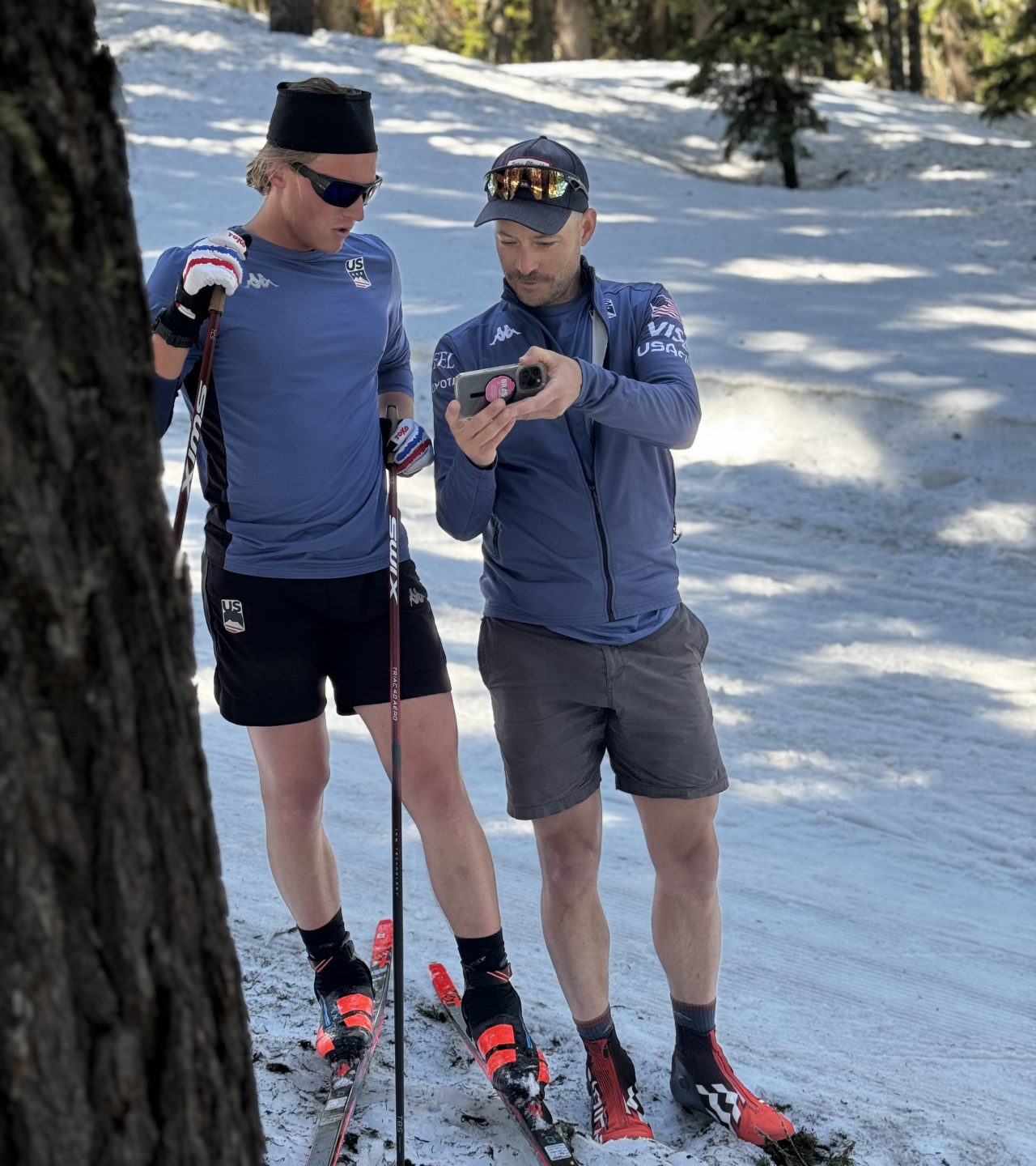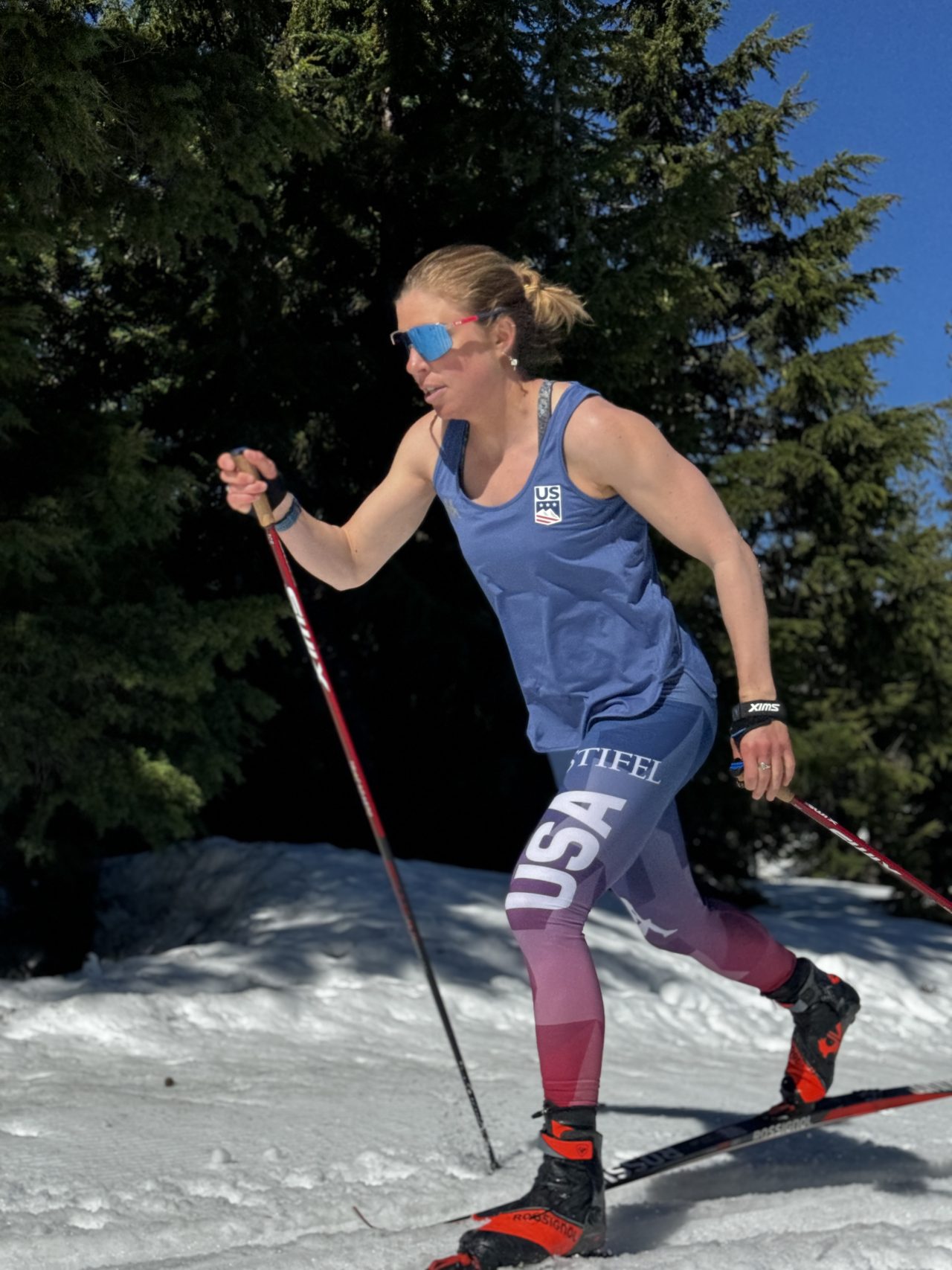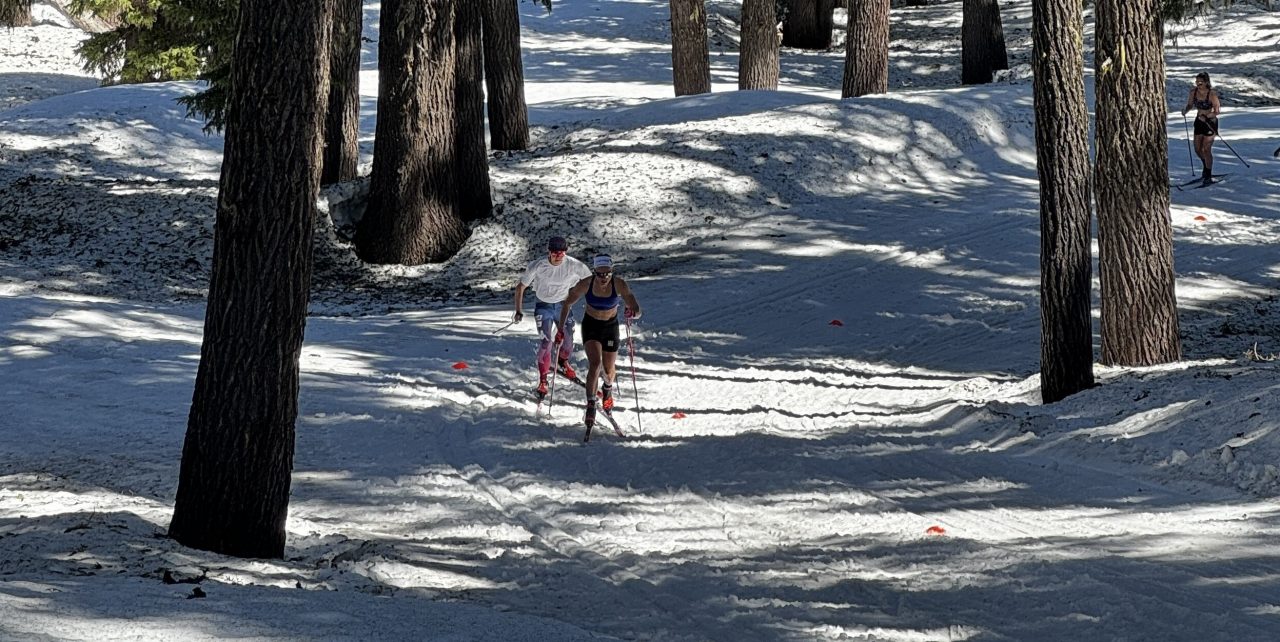 This coverage is made possible through the generous support of Marty and Kathy Hall and A Hall Mark of Excellence Award. To learn more about A Hall Mark of Excellence Award, or to learn how you can support FasterSkier’s coverage, please contact info@fasterskier.com.
This coverage is made possible through the generous support of Marty and Kathy Hall and A Hall Mark of Excellence Award. To learn more about A Hall Mark of Excellence Award, or to learn how you can support FasterSkier’s coverage, please contact info@fasterskier.com.

May 4th through the 17th marked the return to the unofficial start of serious cross-country ski training for Team USA with their annual return to Bend, Oregon for their spring camp held at Mt. Bachelor. Over the years, Bend camp has become a rite of passage for Stifel U.S. Ski Team members who enjoy Mt. Bachelor’s unique ability to provide excellent snow conditions late into the spring on a reliable basis, and enjoy summer like weather while in the valley below. Skiing in shorts and t-shirts is a great way for the team to get back on snow while having a little bit of fun. It’s a low key atmosphere; a little more laid back than camps closer to race season.

Bend’s reliable spring snow has made it the venue of choice for many North American teams. Not only is the U.S. cross-country team in attendance, but also in Bend this spring are the U.S Biathlon Team and Craftsbury Green Racing Project team. According to Mt. Bachelor cross-country director, Sydney Powell, those teams will be joined by members of the U.S. and Canadian Para Nordic teams, some members of the Canadian biathlon team, and several other North American Nordic teams.
FasterSkier had the opportunity to speak with Team USA coach, Matt Whitcomb, for updates on what was going on in Bend, and to get the inside scoop on early season training.

This spring, Bend has lived up to its reputation as a skiing paradise. “Conditions have been great,” Whitcomb said. “When we arrived, we had two days of winter, the first day was below freezing and the second day was right around zero (Celsius) and still snowing. Waxing was a challenge, which is what we hope to run into. We need work skiing, waxing, and training in these tricky conditions. Since then, it’s been bluebird conditions; freezing overnight then warming during the day; universal and red klister all day.” The waxing fine tuning is carried out by coaches since the team is unable to have their regular season waxing support. In addition to Whitcomb, the World Cup coaches present included Chris Grover, Kristen Bourne, and Jason Cork. Also present were Greta Anderson and Brian Fish. Rounding out the group is strength coach, Tschana Schiller. Schiller sets up strength training sessions known as “garage training.”
There was an excellent turnout; 22 of 27 Team USA members attended for all, or part, of the camp. And joining this year’s camp was Swedish star Emma Ribom (friend of JC Schoonmaker). Having prominent visitors from foreign teams has also become a tradition of Bend camp.

The Format
Each day at Bend camp provides unique opportunities. “Every day is different,” Whitcomb said. “But the general plan is we ski in the morning, load up the vans at 7:30, and we’re skiing by 8:15. This is after we’ve gotten together and watched a little World Cup video to set the tone, and do a little visualization. We ski for 2-3 hours, not an incredible amount of volume this time of year. This camp is particularly early this year, the way it fell on the calendar, so we’re being a little more conservative. Then in the afternoons we do dryland training, running, roller skiing, biking, or doing strength training. The goals are getting a jumpstart on our fitness and strength and motivation to kick us off into another training year. Also, every hour we can log on snow is a very valuable hour for us. We do emphasize individuality. If there’s a workout that doesn’t work for an athlete, we work with them, if someone misses an interval session because they’re tired, we’ll run a separate one for them later in the week. We’re very flexible.”
There are many ingredients that go into making a good training camp. “One of the goals is that we set the stage for what our new team looks like,” said Whitcomb. “We get together in a room several times a day to eat and train. Some athletes are brand new. Every year this team feels entirely different…even if you exchange just one athlete, the dynamic feels different. This camp is really about setting the tone for what the new team is going to represent.”

Building Team Culture
The American squad is now well known for its team approach, but it doesn’t come by accident. “One of my favorite meetings of the year that we have is what we call our team culture meeting,” said Whitcomb. “We ask ourselves three questions, talk about them and build a document we can reference the rest of the year to remember at the beginning of the season what we intended to build.
Whitcomb shared the secret sauce of the content of the three question approach. The first question is: “What are we proud of as members of the U.S. ski team, as ambassadors for U.S. skiing? So, it will be things like we’re proud of the community we’re part of, which was in our face in Minneapolis.”
“The second question is: “If we wanted to, how would we wreck our team culture? That’s a fun one. Rather than calling ourselves out on things we don’t do well, we can talk about things we know will destroy the fabric of the team, like being late, creating cliques, being lazy, not having each other’s backs.”
“The last question is: “What are our action items; what are we going to do as a team? An example of that is we want to do one community event per camp. Another example is we want to review this document several times through the year, to make sure we’re on track.”
This type of candor can present a challenge for new members. “We don’t ever say that we want everybody to participate…just because not everybody is comfortable speaking in a group that they’re adjusting to for the first time. But generally, everybody does participate with something spoken. But simply to be present is to participate.”

The message of what skiers take home is different for everyone. “The one baseline concept I hope they get is a new level of confidence knowing that they have this other team, the national team, that has their backs that they are a part of and connected to. Also, individually we have worked on technical and training concepts that they can bring home to apply to their training.”

The American Way
The U.S. team’s approach to camp is different than many other countries. Since the American system is decentralized, the athletes also work with their own clubs when not training with the national team. “It’s no problem for a lot of these athletes to accomplish all of the training that they need to be able to sustain a great season in Europe, or at World Juniors,” said Whitcomb. “But at the end of the day, in particular for World Cup athletes, you’re not going to be spending that time with your club program. You need two teams. We are proud to be a decentralized program that depends on its clubs as important partners. This is an additional resource. It’s really necessary for an American athlete to have two teams…to have a club program and national team. If we’re not a connected group, we won’t perform well in Europe. We’re on the road for too long in too tight of quarters not to have team cohesion be a critical focus.”
Please return to FasterSkier for part II of our interview with Matt Whitcomb for more insight into the Bend/Mt. Bachelor training camp when he will discuss the team’s goals, integrating a new generation into the team, trying to be the best in the world, World Cup issues, and an update on Ben Ogden.




